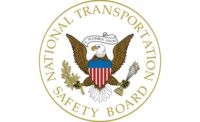Group documenting Marcellus gas well leaks

Armed with a specialized thermal imaging camera, a group is traveling in the West Virginia Marcellus fields to document natural gas leaks and pollution.
Nadia Steinzor, eastern program coordinator for Earthworks, says the environmental group bought a forward-looking infrared camera (FLIR) because most gas industry leaks of methane and volatile organic compounds can't be seen with the naked eye.
Steinzor says people who live downwind of leaks have a tough time getting their health issues taken seriously.
"The same complaints all across the country of headaches, nausea, dizziness – and yet they've been dismissed as just anecdotal information,” she points out. “We purchased this camera in order to make invisible pollution visible."
Oil and gas drillers defend their industry as much cleaner than many other kinds of energy production, and say reports of air pollution are often exaggerated.
Steinzor says residents interested in having facilities near them examined can get in touch with the team via the invisible air pollution page at earthworksaction.org.
Last week the Obama administration finalized the first ever rules on oil and gas industry methane leaks. The regulations aim to reduce those emissions by more than 40 percent over the next decade.
Steinzor says the drilling companies will be pushed into doing a better job of dealing with the kind of leaks Earthworks is documenting.
"That final rule is going to go a long way toward requiring operators to do leak detection and repair,” she stresses. “They are themselves going to have to go out and inspect their own operations and then take action."
Criticism of the new methane rules has been muted. Steinzor says that's probably because estimates from the EPA and others say the regulations will end up saving the industry more money than they cost.
Source: Public News Service West Virginia
Looking for a reprint of this article?
From high-res PDFs to custom plaques, order your copy today!





